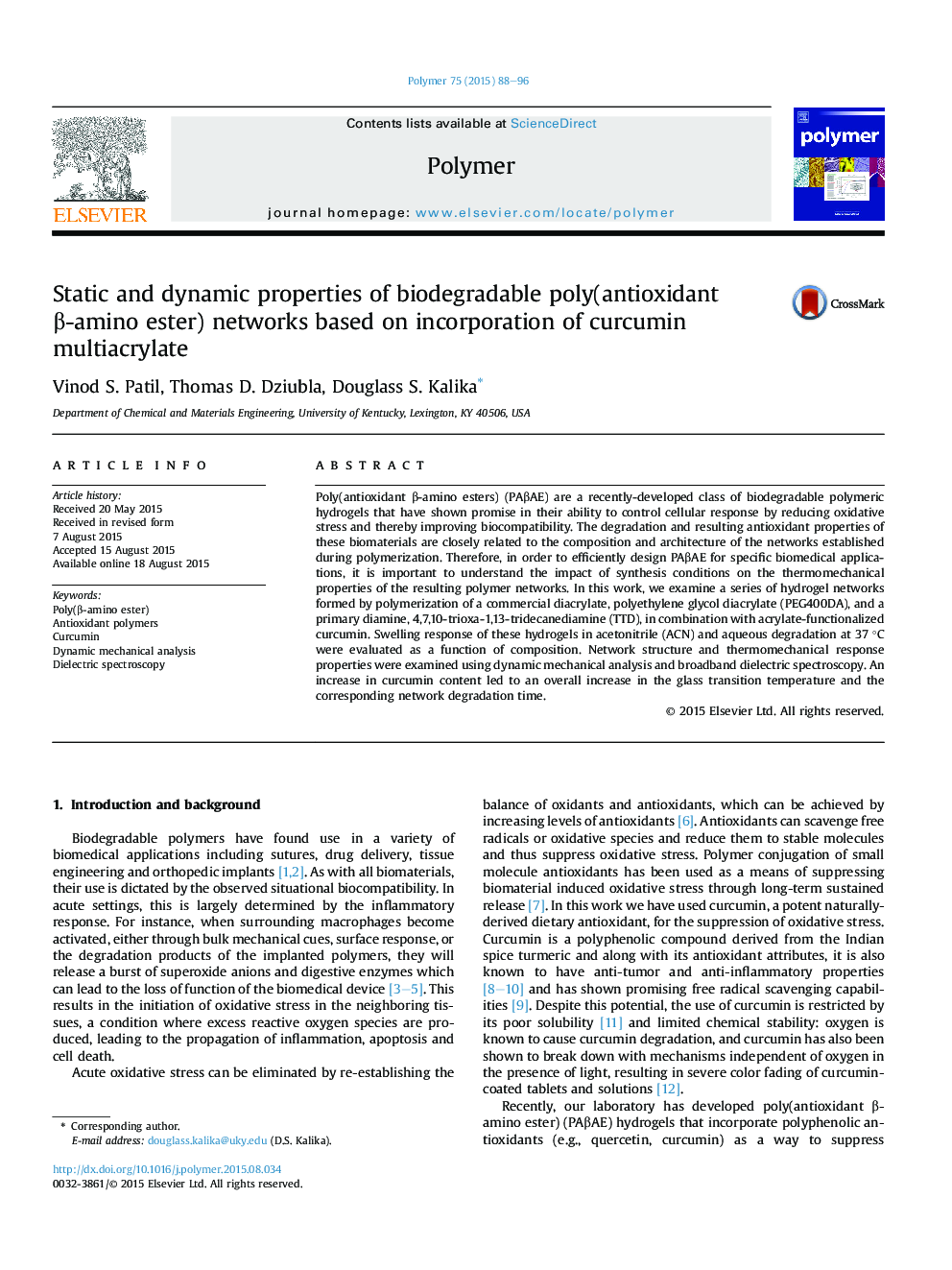| Article ID | Journal | Published Year | Pages | File Type |
|---|---|---|---|---|
| 5180010 | Polymer | 2015 | 9 Pages |
â¢Poly(antioxidant β-amino esters) formulated for controlled antioxidant release.â¢Network properties studied as a function of curcumin incorporation.â¢Aqueous degradation time increased from 3 to 25 h with increasing curcumin.â¢Glass transition temperature displayed strong increase with curcumin inclusion.
Poly(antioxidant β-amino esters) (PAβAE) are a recently-developed class of biodegradable polymeric hydrogels that have shown promise in their ability to control cellular response by reducing oxidative stress and thereby improving biocompatibility. The degradation and resulting antioxidant properties of these biomaterials are closely related to the composition and architecture of the networks established during polymerization. Therefore, in order to efficiently design PAβAE for specific biomedical applications, it is important to understand the impact of synthesis conditions on the thermomechanical properties of the resulting polymer networks. In this work, we examine a series of hydrogel networks formed by polymerization of a commercial diacrylate, polyethylene glycol diacrylate (PEG400DA), and a primary diamine, 4,7,10-trioxa-1,13-tridecanediamine (TTD), in combination with acrylate-functionalized curcumin. Swelling response of these hydrogels in acetonitrile (ACN) and aqueous degradation at 37 °C were evaluated as a function of composition. Network structure and thermomechanical response properties were examined using dynamic mechanical analysis and broadband dielectric spectroscopy. An increase in curcumin content led to an overall increase in the glass transition temperature and the corresponding network degradation time.
Graphical abstractDownload high-res image (149KB)Download full-size image
